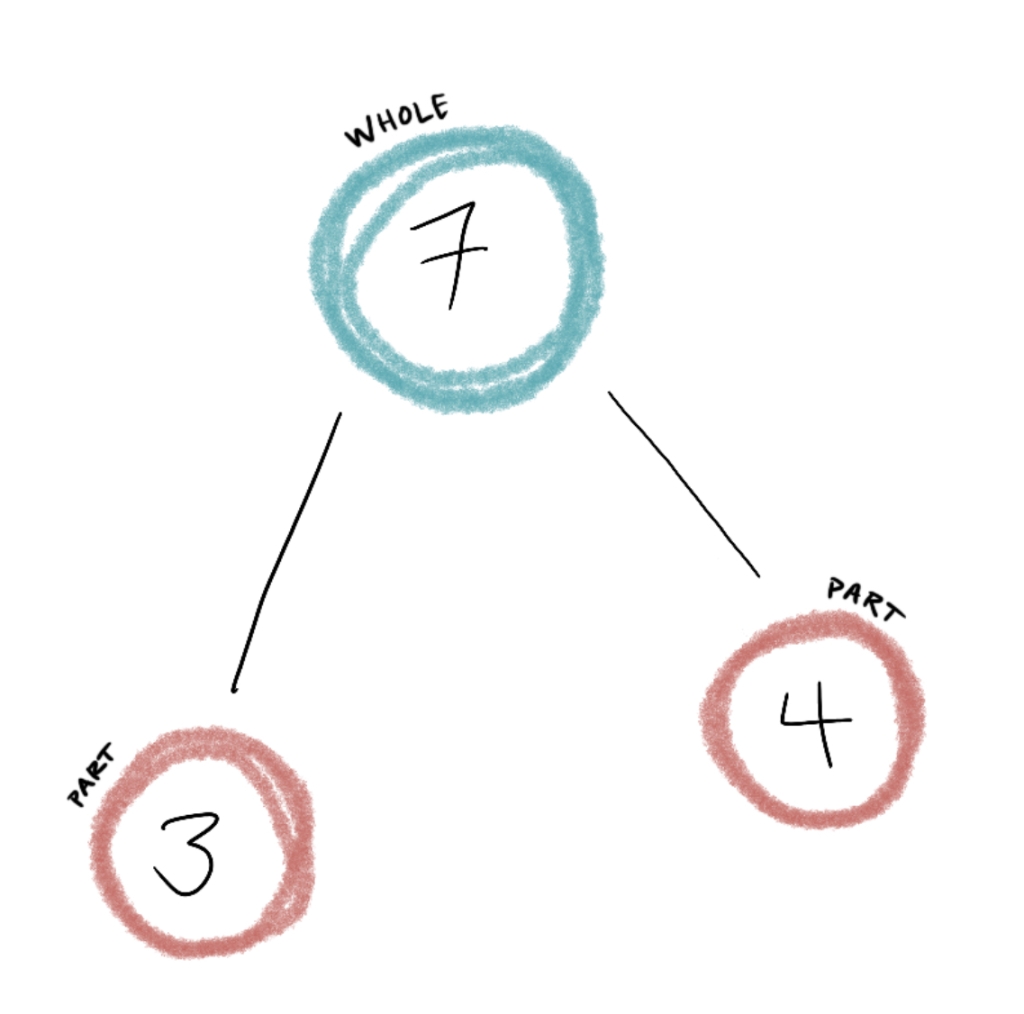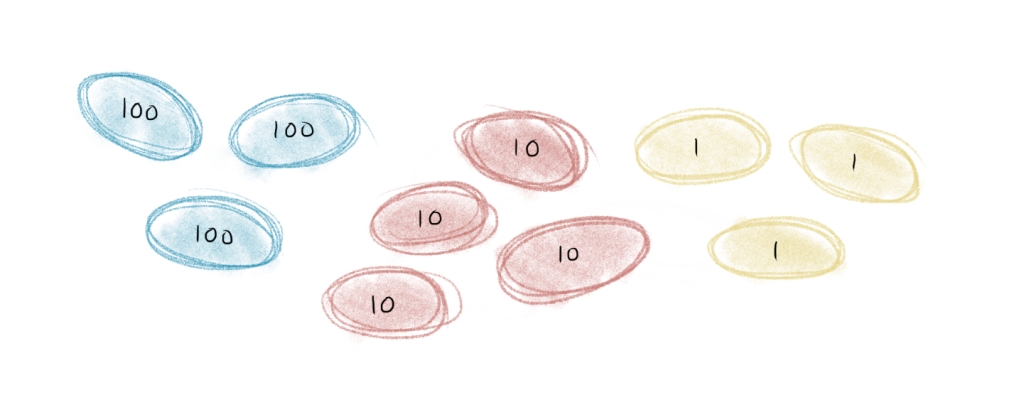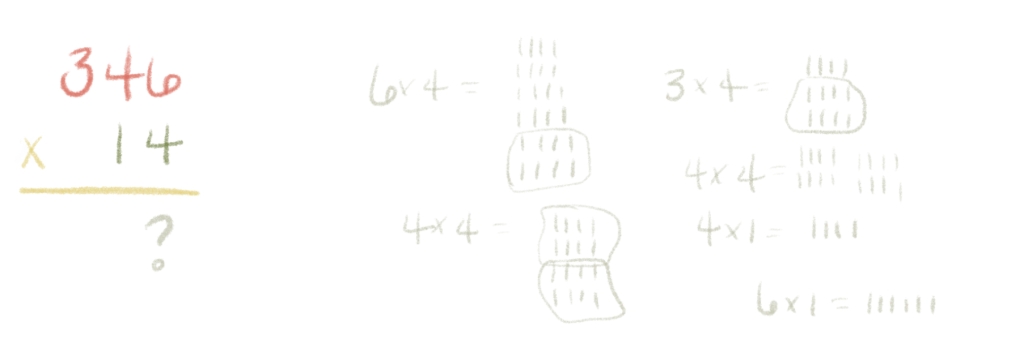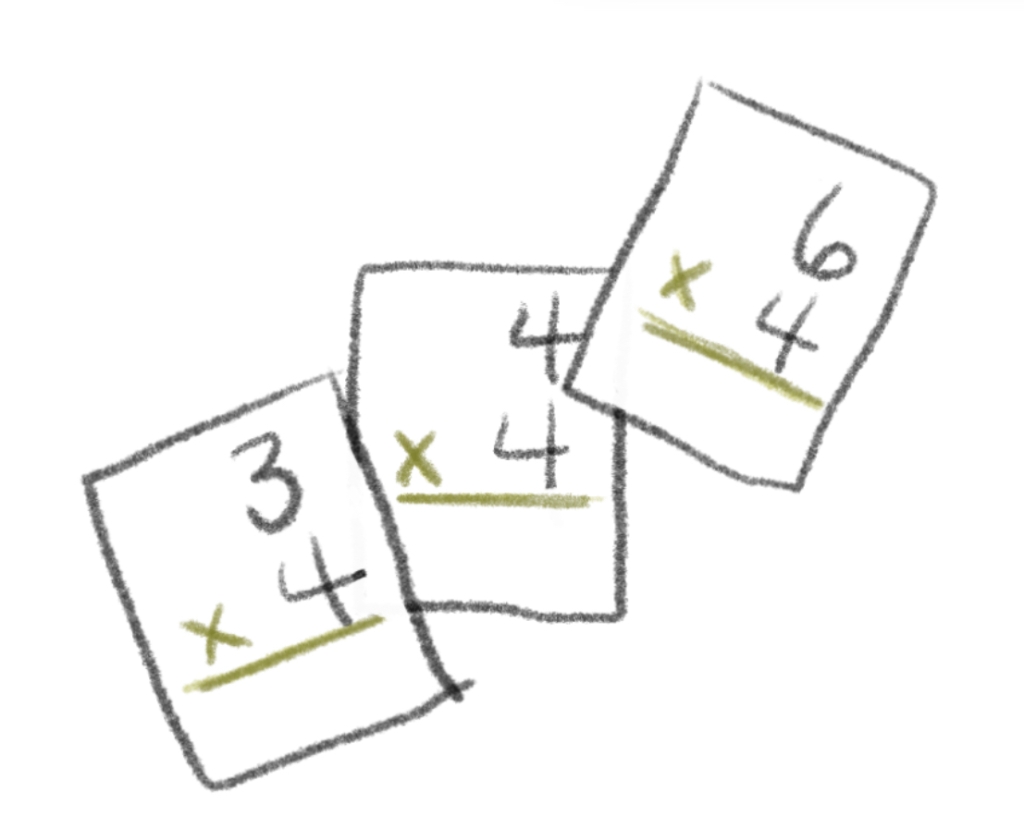Parents of students who are new to classical schools know that Singapore math is unlike any math curriculum they’re used to. Why? What makes it so different, and why is Singapore math so popular in homeschooling circles and classical schools?
There are countless (ha!) math curricula available on the market today, each claiming to boost students’ scores on state tests, meet national and state standards, and encourage high academic achievement. Singapore math takes a very different approach than the standard textbooks found in most American public schools, and the results are impressive.
First, a little history: Singapore Math originated in Singapore public schools in the 1980s and has since grown in popularity throughout the world. The performance of students who have studied math the Singapore way is impressive. The Trends in International Mathematics and Science Study (TIMSS) is an international test that measures the achievement of 4th and 8th grade students in mathematics. Between 1995 and 2015, Singaporean 8th grade students ranked first in the world 4 times in mathematics, and never finished lower than third. During the same period, 8th grade students in the United States ranked between 9th and 19th place.

The performance of 4th grade students was similar. During those same 20 years, Singapore’s 4th graders ranked first in the world five times, and never finished lower than second, while 4th grade students the United States ranked between 6th and 14th place.
What explains this success? Why does Singapore math work so well?
To start, Singapore Math is designed to complement the natural development of a child’s mathematical knowledge. Each mathematical concept is introduced with a concrete model using physical objects we call math manipulative. A Singapore math classroom is full of colored counters, ten frames, base ten blocks, and other tools to help students understand the meaning behind the symbols we use in mathematics.

After the problem has been translated into a picture, the standard algorithms are introduced as the final stage in the process. In Singapore math training, we call this the Concrete-Pictorial-Abstract approach, or CPA. Beginning with objects and pictures rather than mathematical symbols means that students will understand what they’re really doing when solving a problem, rather than simply copying a process over and over.

Singapore math builds on previously acquired knowledge to teach new concepts to children. It turns out that there is a logical order in which things should be taught, and that is particularly true in mathematics. It’s not possible to understand the concept of multiplication until you understand addition, for example. No matter how great a teacher is, or how intelligent a student, multiplication cannot be understood by someone who does not understand addition.
All of math is like that, and although we know that for the early stages of a child’s math education, in this country we seem to have forgotten it for upper elementary middle, and high school students. When I was in school we skipped around all over the place, and with switching teachers and switching curricula, it was easy to get lost. The creators of Singapore math have thought through the order in which each mathematical concept should be introduced.
Students who were previously anxious about math homework were doing it just as they’d do anything else, and they were quick to solve complicated word problems in their heads. Math became a way of thinking for them, not a tiresome or repetitive exercise.
When I was a school headmaster it took students a little while to get used to Singapore math, but after a couple of months it was clear to me that this was a better way. Students who were previously anxious about math homework were doing it just as they’d do anything else, and they were quick to solve complicated word problems in their heads. Math became a way of thinking for them, not a tiresome or repetitive exercise.
With the Singapore method, each math problem is part of a growing framework of knowledge and students are able to put what they are learning into context. And as students progress from year to year, Singapore math also returns to core topics with increasing depth in order to create an intentional pattern of scope and sequence.

The Singapore curriculum also teaches students to use mental math, which enables them to solve more complicated problems quickly. Imagine trying to multiply two three digit numbers in your head using just finger-counting. It would take forever!

Then imagine taking the same problem to a student who already knows 6 times 4, 4 times 3, 3 times 4, and so on because he’s memorized his math facts. Instant recall of those simple answers allows that student to get to answer without getting bogged down in a bunch of simple calculations.

A teacher or parent looking at Singapore math will see a focus on core techniques like place value, bar modeling, and number bonds rather than teaching students to use lots of different strategies to solve a problem. There are number of different ways to approach any math problem, but focusing one all of them can be overwhelming. Singapore chooses a few strategies that work, which allows students to focus on the math itself, rather than all of the procedures that could be used.
There is No Perfect Math Curriculum
Now, there is no perfect math curriculum, and Singapore does have its weaknesses. Particularly, Singapore neglects the clear development of math facts and limits repetitive review within each year.
While Singapore does emphasize mental math, the curriculum does not place a strong emphasis on the development of automaticity through drilling. To remedy this issue, we often supplement with drill sheets that are intentionally aligned to the curriculum. The team at the Barney Charter School Initiative has put together some math exercises for just this purpose. If you send us a note, we’ll pass them along.
The other criticism of Singapore math is that it doesn’t use “spiraling” as well as Saxon math, another curriculum popular in classical schools. Spiraling is another word for repetitive review: teaching a concept one month, and then asking a student to return to it the next month to make sure it’s really learned.
Singapore does use spiraling from year to year, but it does not spiral old material into new lessons during the year well. Even though Singapore does have periodic reviews, we recommend that teachers spread those out into their lessons so that the teachers aren’t committing too much class time to working through the review sections.
Dimensions Math
I have often heard teachers wish that the Singapore curriculum were easier for teachers to use. Now, with the publication of Dimensions Math, there is a more teacher friendly set of resources.
Within the larger curriculum of Singapore Math, Dimensions Math retains all of the same core traits, but includes several features that make teaching Singapore math easier on the teacher and student.
Throughout the program, Dimensions expands and highlights important topics that might be more subtly taught in Singapore’s Primary Mathematics. This change provides a greater degree of direction for teachers, which allows them to clearly emphasize the key points of each lesson. For example, number bonds are emphasized as an important tool in a greater number of lessons. The Dimensions program also changes the order of a few lessons to increase student proficiency. In order to smooth out the transition between 2A and 3A, students are now introduced to basic bar models in 2A. The solutions to all of these worksheets are also now included in the teacher’s guide. The well-illustrated textbooks and workbooks are engaging, easy to use, and the content has been proven effective on an international level.
The Singapore Math curriculum fits well with a classical education model because it is structured to match the learning patterns of children and aims for excellence as children move toward further growth and application.
*We didn’t receive anything in return for recommending Singapore math. We just think it’s great.

[…] In Hillsdale-affilated classical schools, we recommend Singapore math. You can learn more about it here. […]
[…] To help teachers and parents understand Singapore math, I’ve been writing about how although it can seem difficult at first, it’s actually a common-sense approach to mathematics that really gets results. Before you read this post, take a look at an introduction to Singapore math here. […]
[…] getting the correct answer. Students need to understand why that answer is the right one, and the concrete-pictorial-abstract approach of Singapore math is the best way to make sure that happens. Especially in the early grades, manipulatives like unit […]